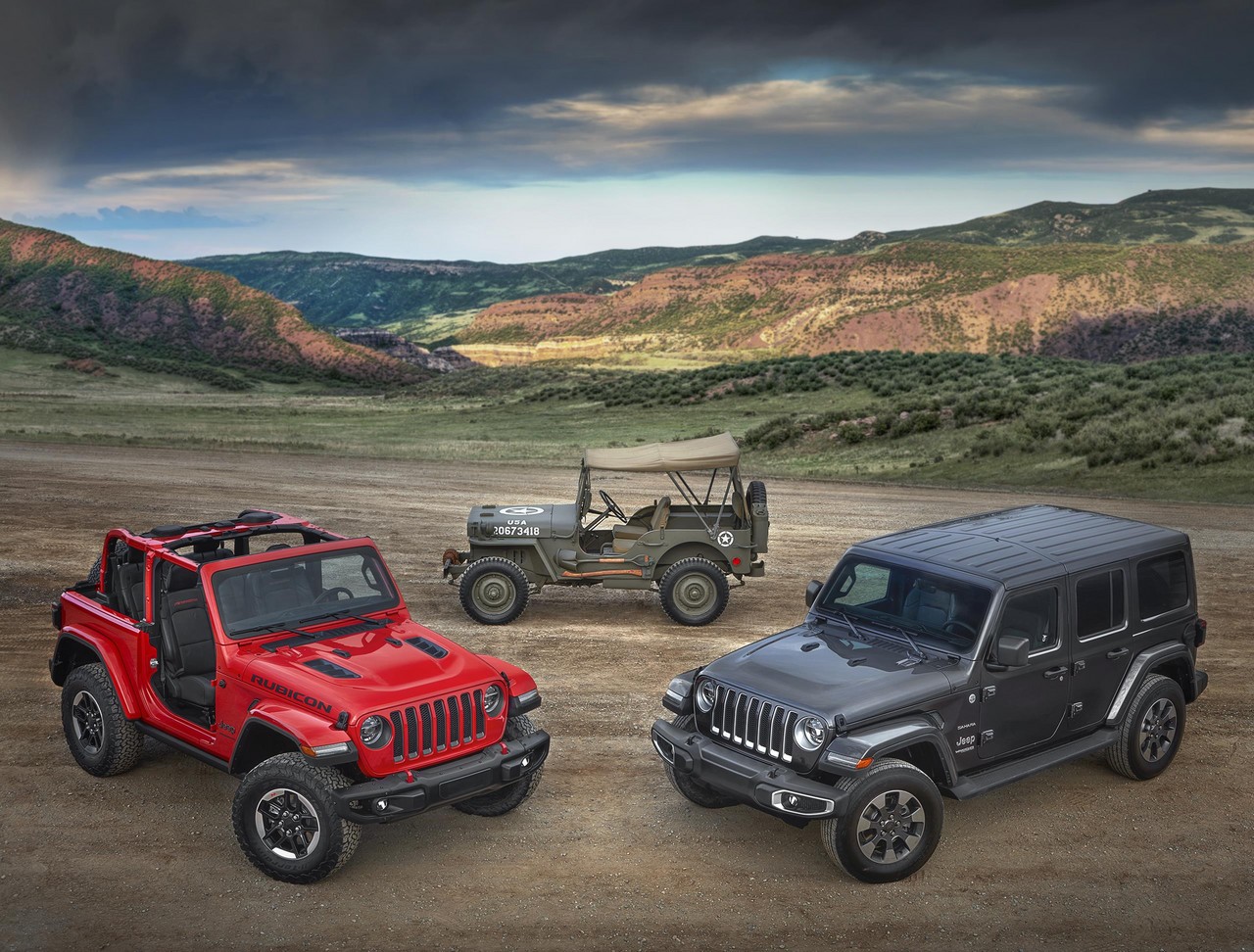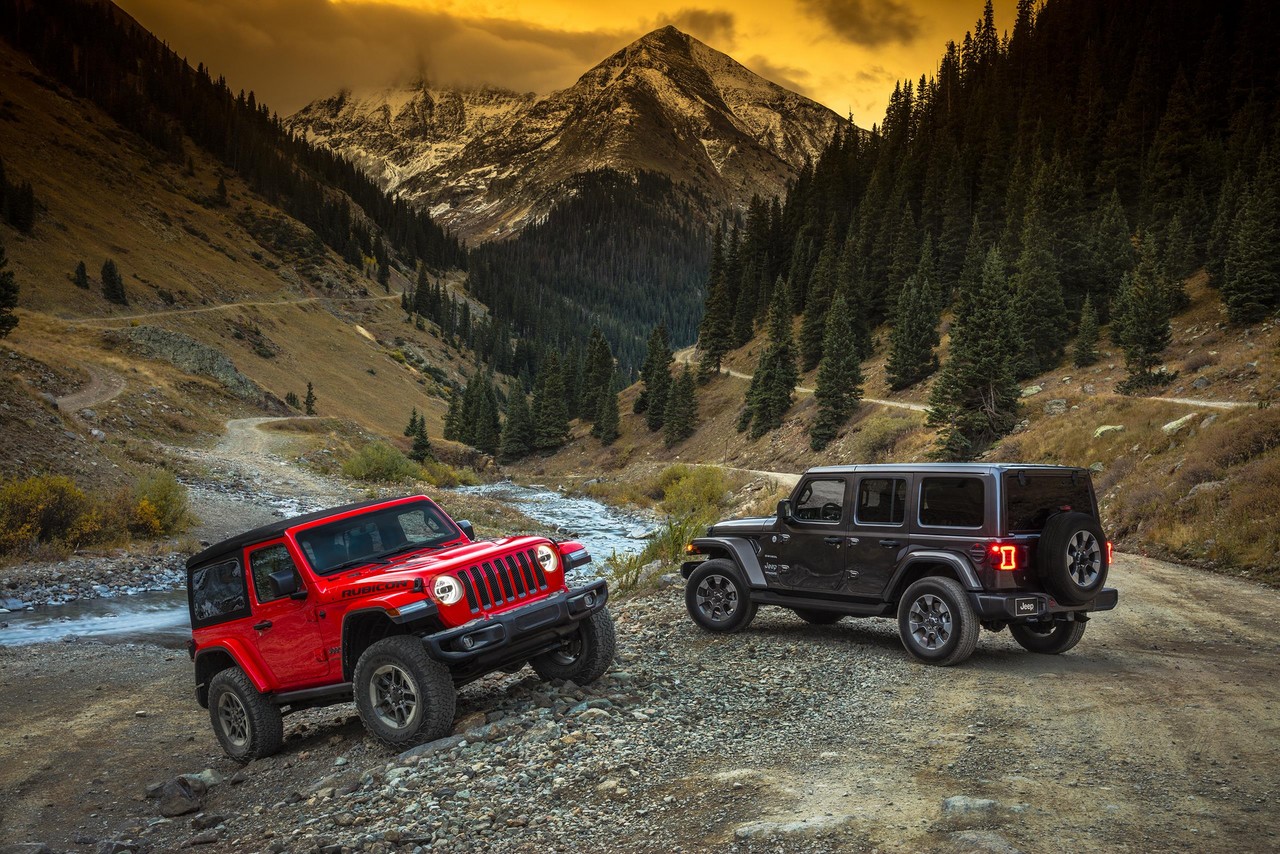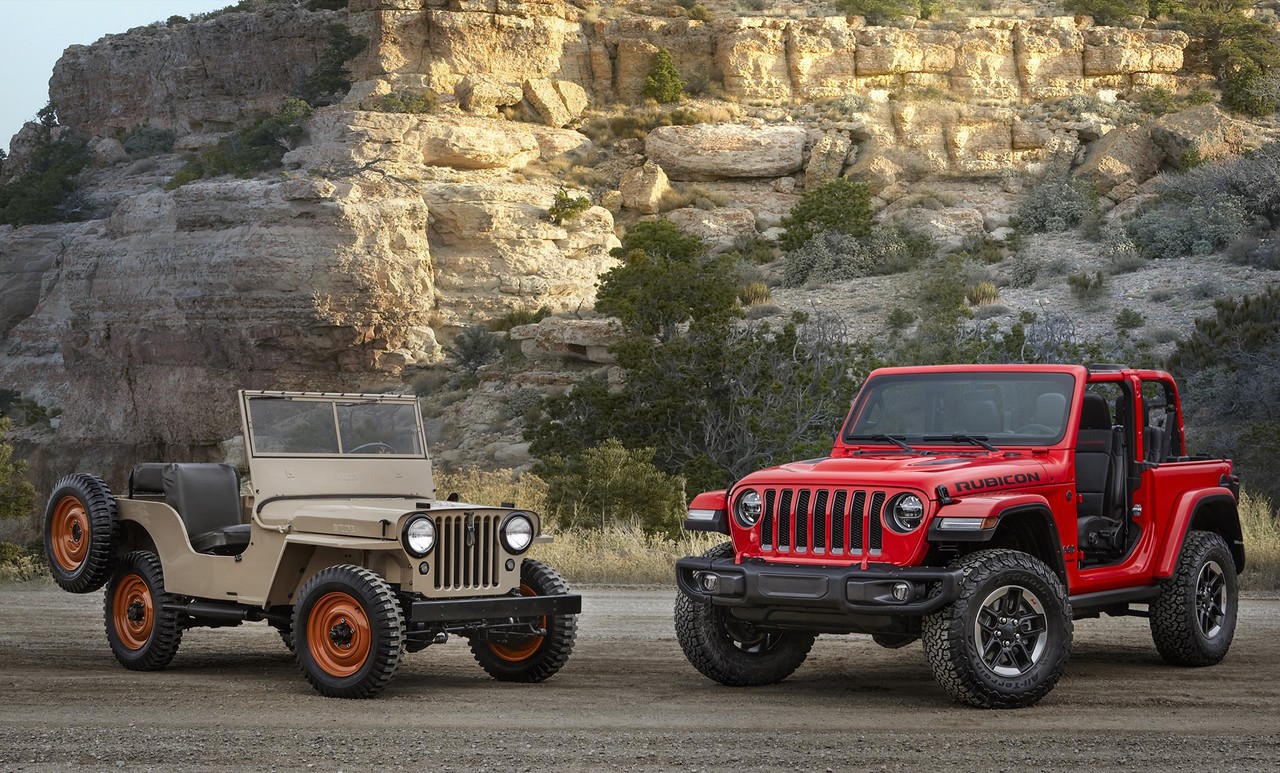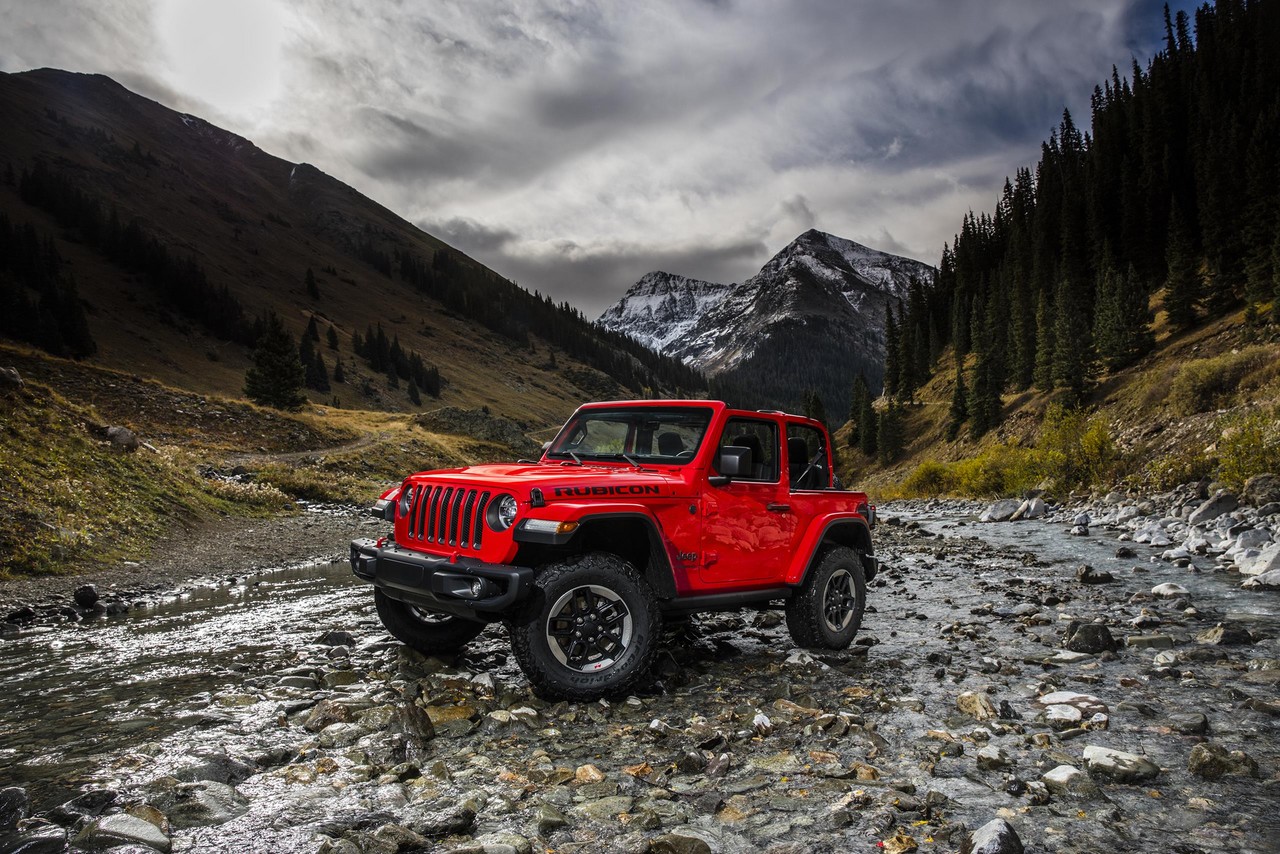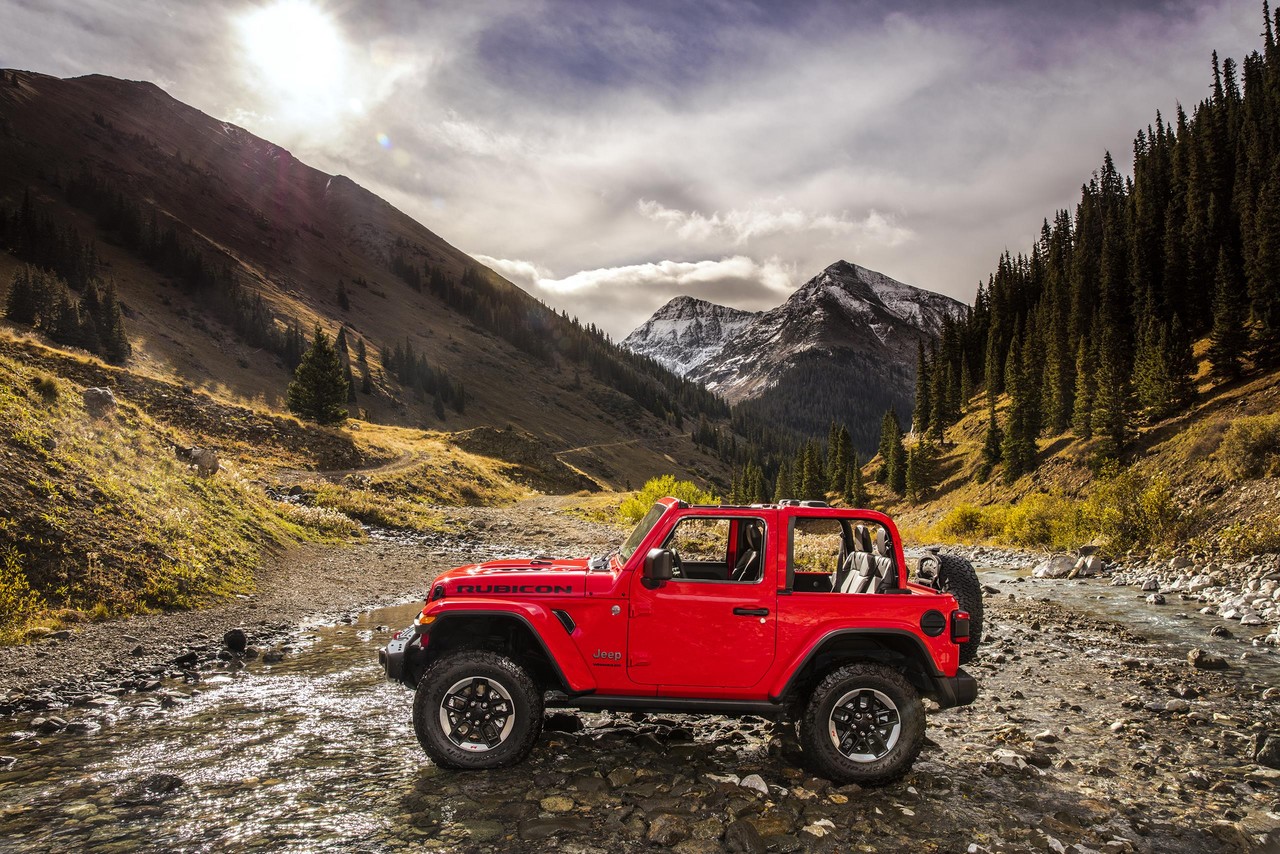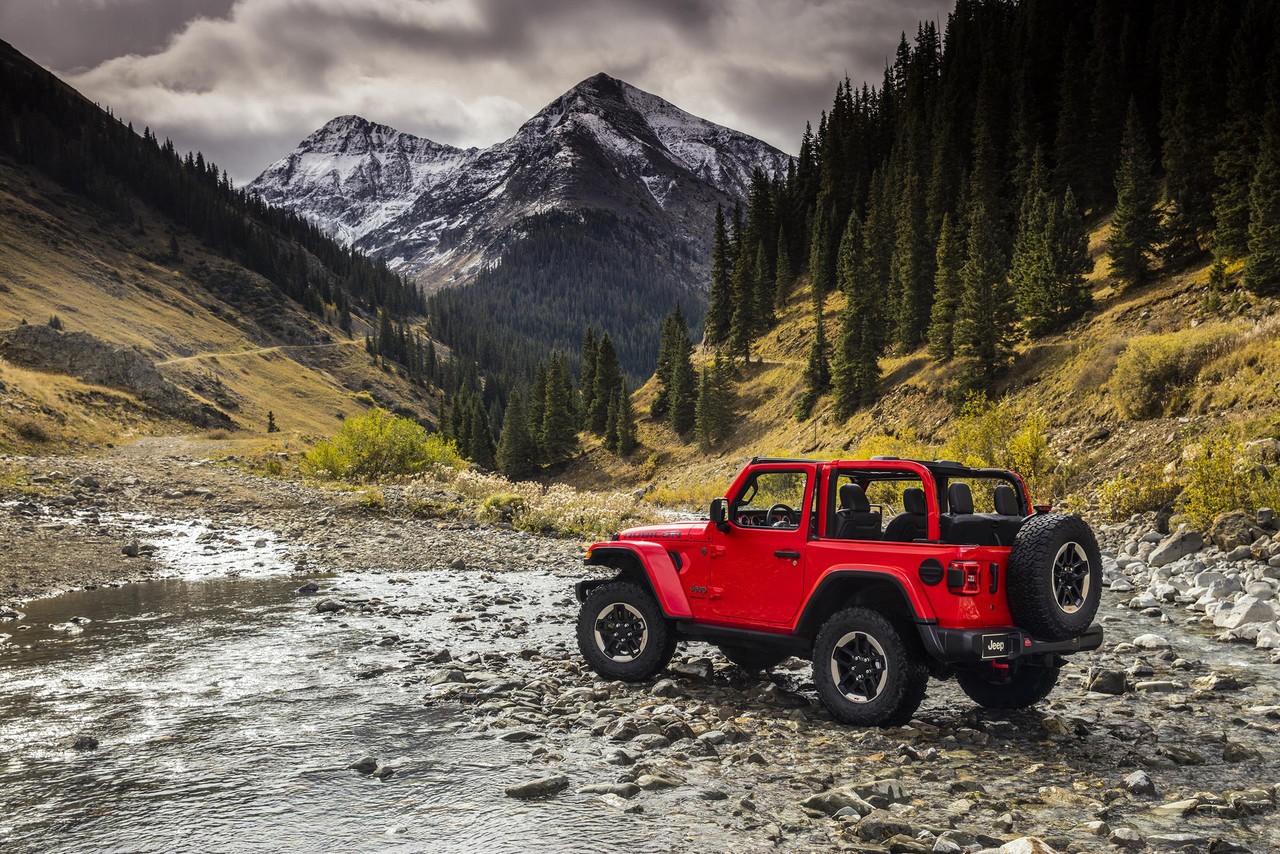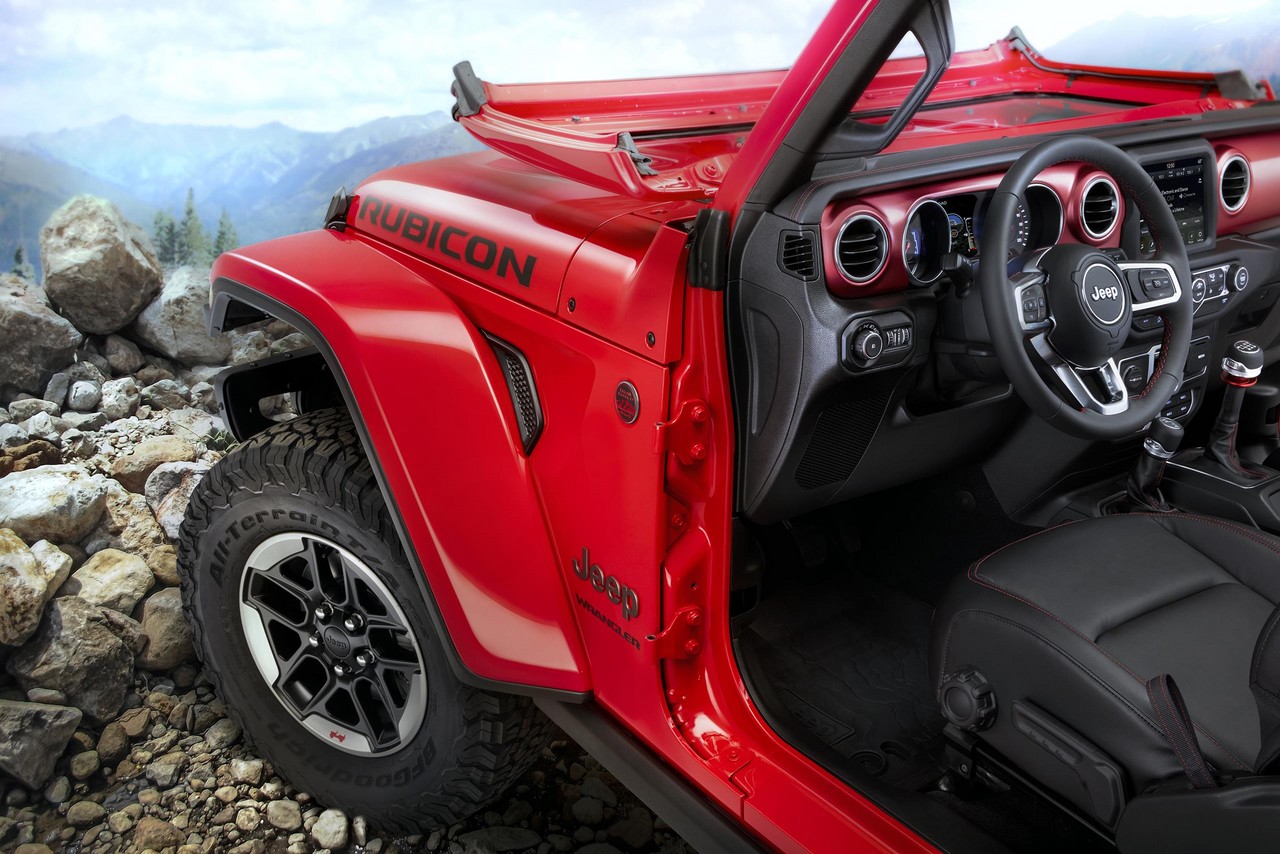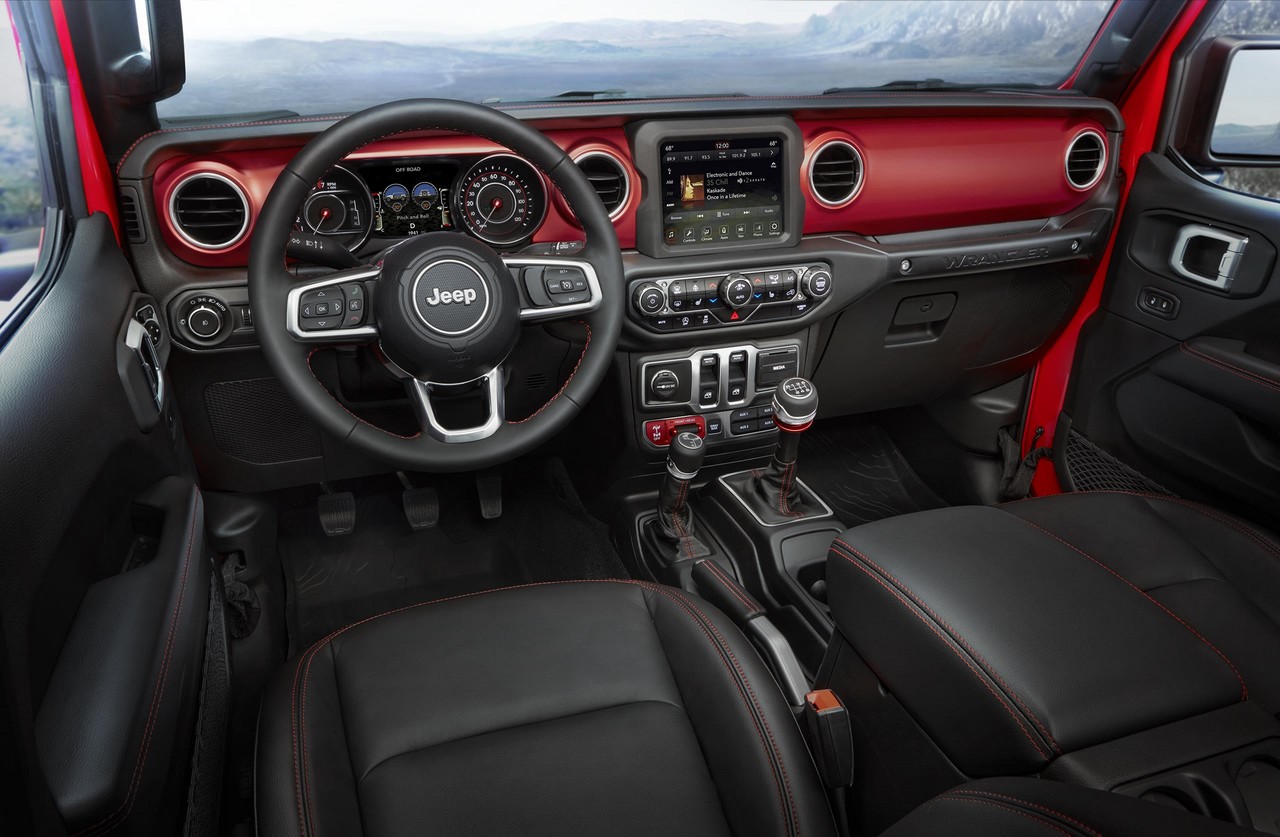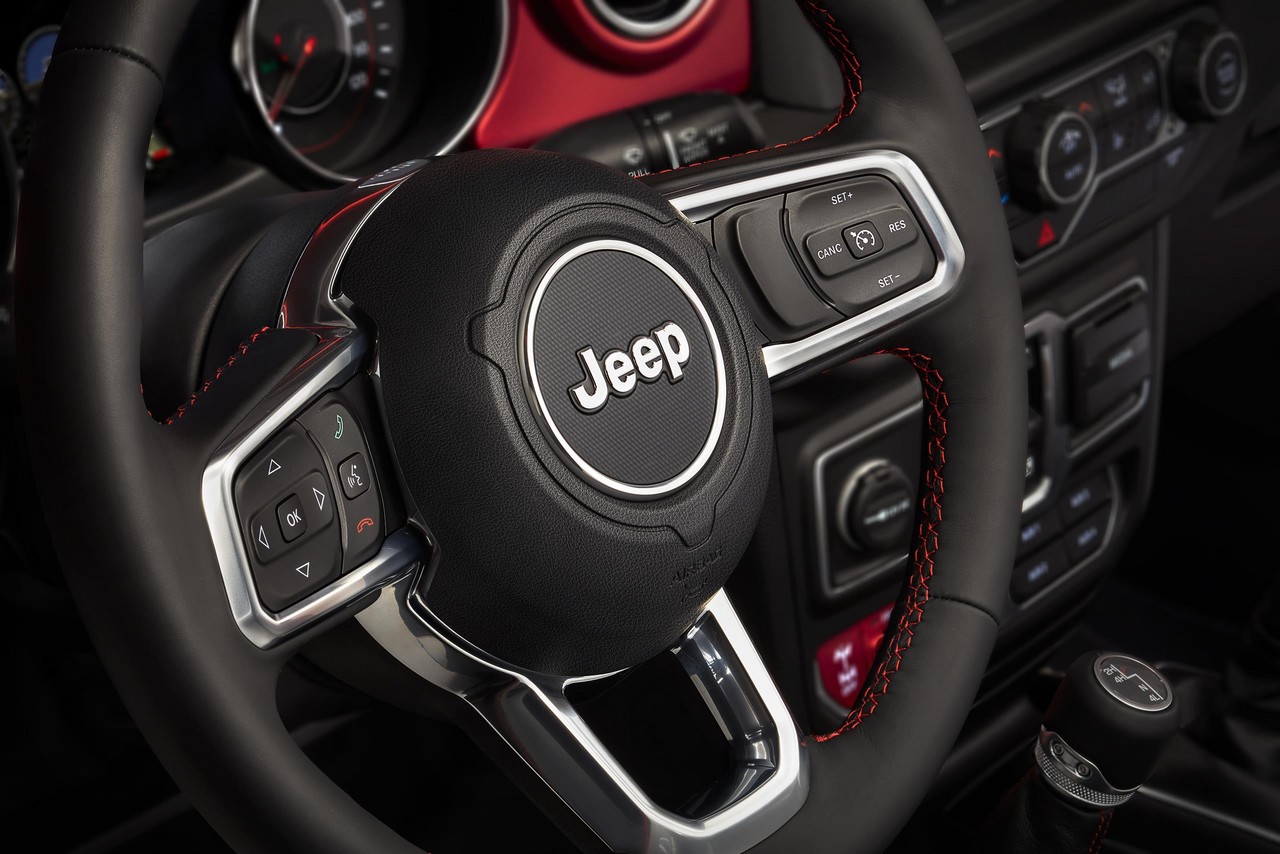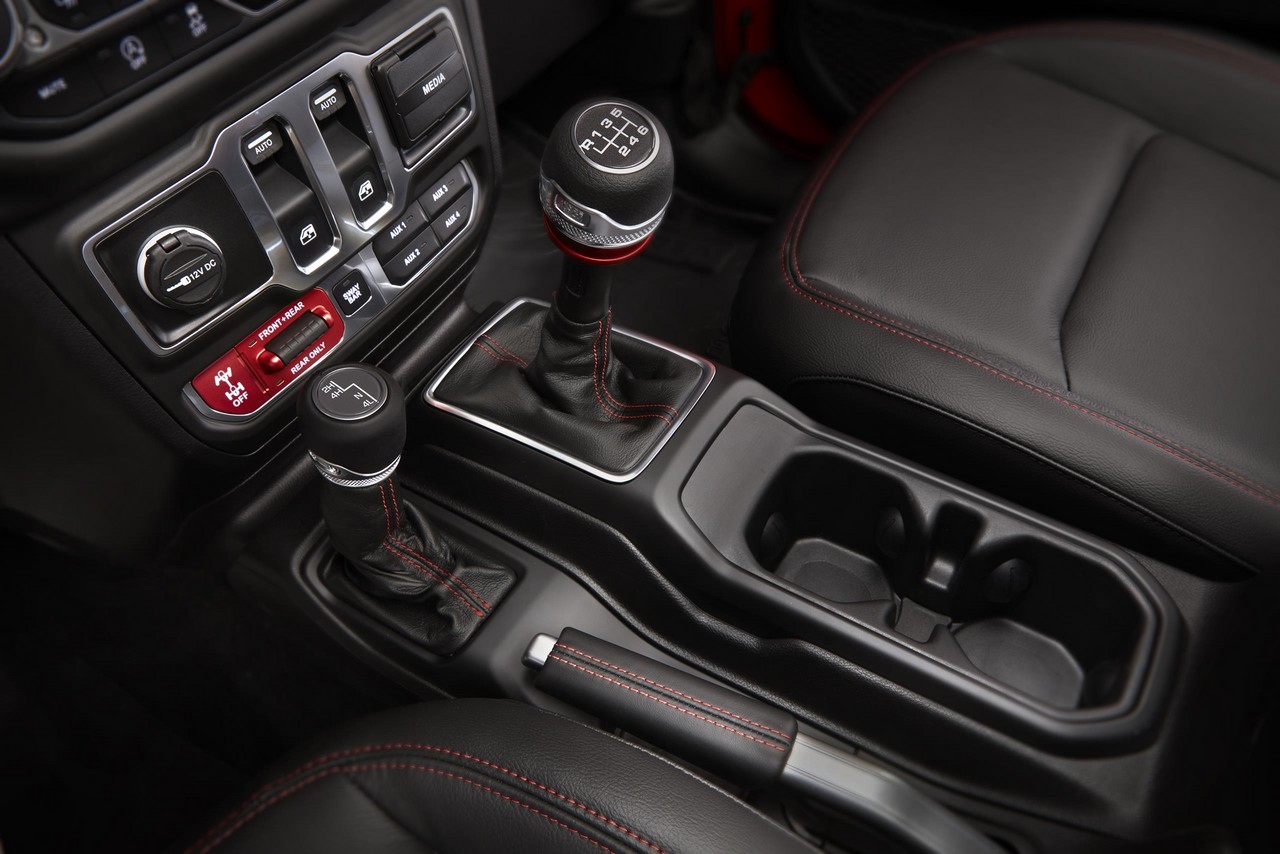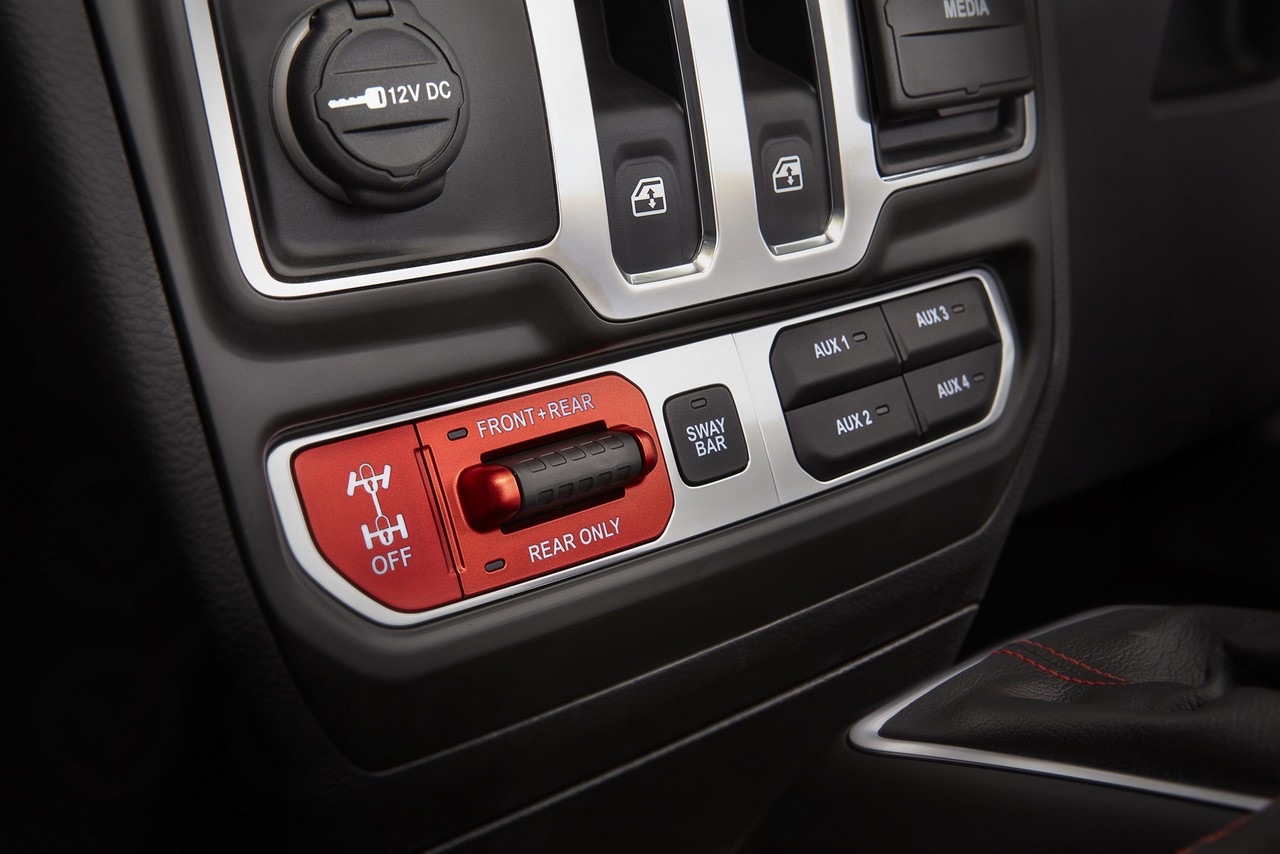
- Off-road ability, especially the Wrangler Rubicon
- Modern, fuel-efficient engines and eight-speed auto transmissions
- Aluminium panels reduce bodyweight
- One star Euro NCAP safety rating
- Autonomous braking not standard
- Unsettled ride
- Wind noise and, for Wrangler Rubicon, tyre noise
- No manual transmissions for Australia
- High retail pricing
Overview
Production of the Jeep JL Wrangler commenced in January 2018 and it was released in Australia in April 2019. Manufactured in Toledo, Ohio, the Jeep JL Wrangler was an off-road vehicle that was available in two- and four-door bodies. For Australia, the Jeep JL Wrangler was powered by 3.6-litre ‘Pentastar’ V6 petrol and 2.2-litre ‘MultiJet II’ turbo diesel engines that were mated to eight-speed automatic transmissions. Furthermore, the JL Wrangler was offered in Sport S, Overland and Rubicon editions.
| Variant | Engine | Edition | Body | Trans. | Peak power | Peak torque |
|---|---|---|---|---|---|---|
| 3.6L V6 (Stop & Start) | 3604 cc petrol V6 | Sport S, Overland |
2dr, 4dr |
8sp auto (850RE) |
209 kW at 6400 rpm | 353 Nm at 4800 rpm |
| Rubicon | 4dr | |||||
| 2.2L MultiJet II | 2143 cc turbo diesel I4 | Rubicon | 4dr | 8sp auto | 132 kW at 3750 rpm | 450 Nm at 1750 rpm |
4×4 systems
The JL Wrangler Sport S and Overland editions had Jeep’s ‘Selec-Trac’ four-wheel drive system which consisted of an MP0322 transfer case and had a 4.0:1 reduction ratio for the low range gears. As standard, the Jeep JL Wrangler had four skid plates and bars for off-road use.
The JL Wrangler Rubicon, however, had the part-time ‘Rock-Trac’ four-wheel drive system which had the NV241OR transfer case and, again, a 4.0:1 reduction ratio for the low range gears. For greater off-road capability, the Wrangler Rubicon also had:
- Heavy duty Dana 44 front and rear axles;
- ‘Tru-Lock’ electric front and rear axle differential locks; and,
- Heavy gauge tubular steel rock rails.
Body and dimensions
The Jeep JL Wrangler had ladder-type frame construction (i.e. a body-on-frame chassis). The two-door Jeep JL Wrangler was 4237 mm long, 1875 mm wide, 1868 mm tall and had a 2460 mm long wheelbase; the four-door Wrangler, however, had a 548 mm longer wheelbase (3008 mm) such that it was 4785 mm long.
Ground clearance for the Jeep JL Wrangler was 277 mm, while the vehicle had a 44 degree approach angle, a 27.8 degree breakover angle and a 37 degree departure angle.
To reduce its mass, the doors, hinges, bonnet and fenders of the Jeep JL Wrangler were made from aluminium, while the rear ‘swing gate’ was made from magnesium. Other design features of the JL Wrangler included:
- For the Wrangler Sport S, the ‘Sunrider soft top’ had retainers that slid into a track for easier removal of the rear passenger window;
- For the Wrangler Overland, a body-coloured three-piece hardtop, while the Rubicon had a black hardtop. Furthermore, the hardtop roofs had ‘Freedom’ panels and latches provided quicker removal and fitment of the hardtop;
- Available on four-door Rubicon models, the ‘Sky One-Touch powertop’ enabled occupants to retract the full-length open canvas roof by pushing a button;
- The top of the windscreen’s frame had a four bolt design so that the windscreen could be folded down. The header bar was connected to the A-pillars and remained in place when the windscreen is folded down – this allowed the rear-view mirror to remain in place when the windscreen is folded;
- The aluminium doors had the Torx bit tool size stamped directly onto the hinge so owners would know which tool was required to remove the doors. Furthermore, ‘Lift-Assist’ handles under each door armrest had an integrated pull-cup design to make door removal quicker and easier.
Suspension
The five-link front suspension for the JL Wrangler had a lateral control arm and four longitudinal control arms. The full-width track bars were made of forged steel and controlled lateral movement of the axle with minimal angle change during suspension travel. Compared to the JK Wrangler , the roll centre height was raised and the spring rates were re-tuned to provide a comfortable ride in urban conditions.
The five-link rear suspension had two upper and two lower forged steel control arms for longitudinal control, and a track bar for lateral axle control. The control arms were located outside of the frame rails while the rear shock absorbers were splayed (i.e. angled inboard at the top) for consistent damping.
For the Wrangler Rubicon, the front sway-bar had an electronic disconnect feature to provide additional wheel travel when required. The suspension of the Wrangler Rubicon was also designed for greater wheel articulation and suspension travel.
Steering
The Jeep JL Wrangler had rack-and-pinion steering with electric power assistance. The electric motor worked with an adaptive engine control unit (ECU) to monitor steering speed, steering wheel angle and vehicle speed so that steering assistance was varied according to conditions. Two-door Jeep Wrangler models had a steering ratio of 17.4:1, while the ratio for four-door models was 15.6:1.
Safety equipment
Standard safety equipment for the Jeep JL Wrangler included dual front airbags, front seat-mounted pelvic-thorax airbags, ABS, electronic brakeforce distribution, brake assist, electronic stability control, traction control and front seatbelt pre-tensioners.
Beyond this, the Jeep Wrangler Overland and Rubicon editions were equipped with:
- Full-Speed Forward Collision Warning with Active Braking: used radar sensors in the grille and a forward-facing camera to monitor the distance to objects ahead. If there was a collision risk, the audible and visual warnings would be issued, while the brakes may also be applied briefly to alert the driver. If the driver did not respond, the system would provide around one-third of maximum braking force to reduce vehicle speed and mitigate the anticipated collision. If the driver reacted by braking and the system determined that the driver intended to avoid the collision but had not applied sufficient brake system, then the system would automatically provide additional brake force;
- Adaptive Cruise Control (ACC): when cruise control was active, ACC could maintain a safe distance from the vehicle ahead by controlling vehicle speed. If the road ahead cleared, the Wrangler would automatically accelerate to its previously selected cruising speed;
- Blind-spot Monitoring: used dual narrow band radar sensors to aid the driver when changing lanes or if being passed by unseen vehicles. The system would alert the driver of vehicle(s) in their blind spot by illuminating icons in the door mirrors and sounding an audible chime; and,
- Rear Cross Path Detection: when reversing from parking spaces, the driver would be alerted to vehicle(s) that may cross the driver’s path via illuminated icons in the door mirrors and an audible chime.
Euro NCAP testing
In Euro NCAP testing , the Jeep JL Wrangler received a one star safety rating which included a 50 per cent adult occupant protection rating and a 69 per cent adult occupant protection rating. In the frontal offset test, protection of the driver’s chest was rated as weak (a high risk of serious injury), while protection of the thighs, lower left leg and feet were rated as marginal (a moderate risk of serious injury). Specifically, the connection between the A-pillar and trans-facia beam was damaged in a manner that indicated the structure would be unable to withstand higher loads. Furthermore, deformation of the footwell showed that the structure had reached the limit of its integrity.
Features: Jeep JL Wrangler Sport S
The Jeep JL Wrangler was equipped with Fiat Chrysler’s ‘Uconnect 4’ infotainment system that had 7.0- or 8.4-inch touchscreens which featured pinch-and-zoom capability, Apple CarPlay and Android Auto smartphone integration, two front USB ports and an additional two ports ‘in reach’ of rear passengers.
Standard features for the Jeep Wrangler Sport S included 17-inch alloy wheels, an eight speaker sound system, a 7.0-inch touchscreen, an eight speaker audio system, daytime running lamps (DRLs), dusk-sensing headlights, a rear view camera and rear parking sensors with dynamic guidelines (Jeep’s ‘ParkSense Rear Park Assist System’), a leather-wrapped steering wheel, remote central locking and push-button start. As standard, the Wrangler Sport S had a black ‘Sunrider’ soft top.
Features: Jeep JL Wrangler Overland
Compared to the Wrangler Sport S, the Wrangler Overland was further equipped with 18-inch alloy wheels, 8.4-inch touchscreen, satellite navigation, an Alpine audio system with eight speakers and a subwoofer, McKinley leather-trimmed seats with ‘Overland’ logo, LED head- and tail-lights, LED fog lamps, front parking sensors (Jeep’s ‘ParkSense Front Assist System), a 230 volt power outlet and remote start system. The Jeep Wrangler Overland had a body-coloured removable hardtop with ‘Freedom’ panels.
Features: Jeep JL Wrangler Rubicon
The Jeep JL Wrangler Rubicon omitted the leather-trimmed seats of the Wrangler Overland, but was fitted with 17-inch polished alloy wheels with black pockets, 32-inch BF Goodrich off-road tyres and a winch-capable steel front bumper. The Jeep Wrangler Rubicon could also be identified by its ‘Rubicon’ bonnet decal and black hardtop.
Related links
Specifications
